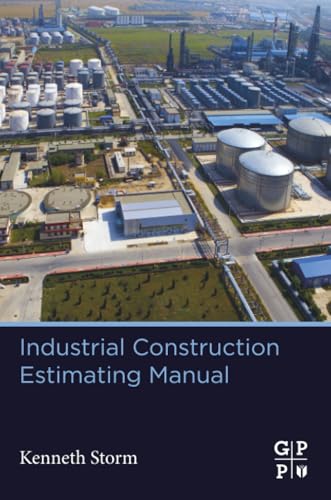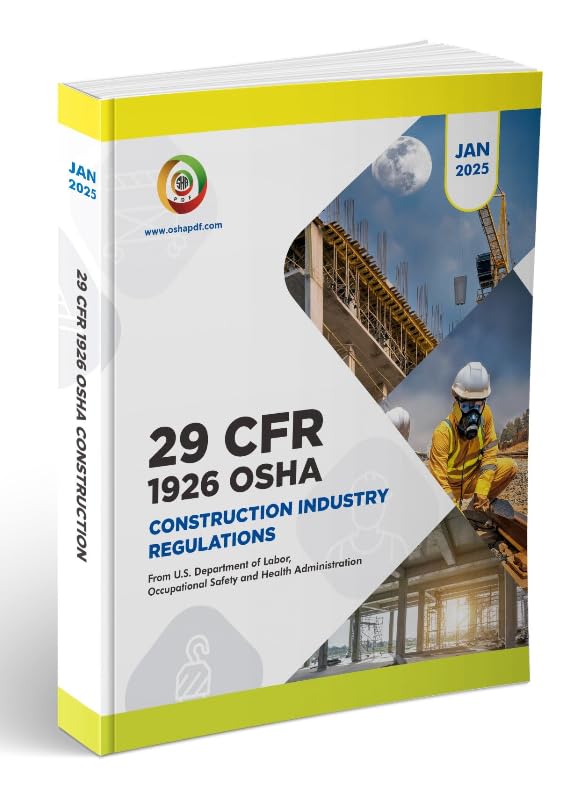For years, I’ve lived with a frustrating compromise that every tradesperson, warehouse worker, and on-their-feet professional knows intimately. The choice has always been between two extremes: the clunky, heavy, but undeniably protective traditional work boot, or the comfortable, lightweight athletic shoe that offers zero protection against job-site hazards. I can’t count the number of 12-hour shifts I’ve ended with aching arches and sore feet, feeling like I’ve been dragging concrete blocks around all day. The fatigue isn’t just in your feet; it travels up your legs and into your back, draining your energy. We’ve all been there. The alternative—wearing standard sneakers—is a non-starter where safety is paramount. A dropped tool, a rolling pallet, or an electrical hazard can turn a comfortable day into a catastrophic one. This dilemma is precisely why the emergence of the athletic safety shoe category has been a game-changer, and it’s what led me to rigorously test the Timberland PRO Powertrain Sport Alloy Safety Toe Work Shoe.
- Anti-Fatigue Technology: A comfort system designed with shock-absorbing, geometrical technology that...
- Alloy Safety Toe: Lightweight, asymmetrical-shaped toe cap, meets US safety standards including ASTM...
Before You Lace Up: What to Demand from an Athletic Safety Shoe
An Industrial & Construction work shoe is more than just an item of footwear; it’s a key solution for a fundamental workplace problem: the need for certified protection without sacrificing the mobility and comfort required for long, active hours. This category bridges the gap, integrating safety features like protective toes and electrical hazard resistance into a platform that mimics the feel and performance of a running shoe. The main benefits are reduced fatigue, increased agility, and enhanced all-day comfort, which directly translates to better focus and productivity on the job. A shoe that feels good keeps you sharper and safer.
The ideal customer for this type of product is someone who is constantly on the move: mechanics walking thousands of steps on concrete, warehouse pickers navigating endless aisles, delivery drivers hopping in and out of trucks, or construction workers who don’t need the heavy-duty waterproofing of a full boot. They value lightweight performance and breathability. Conversely, this style might not be suitable for those in extremely wet or muddy conditions (like heavy-duty excavation or plumbing in flooded areas), or those who require the rigid ankle support of a 6″ or 8″ boot for navigating treacherous, uneven terrain. For those users, a more traditional, waterproof leather boot would be a better choice.
Before investing, consider these crucial points in detail:
- Dimensions & Space: A safety toe, whether steel or alloy, changes the interior geometry of a shoe. Pay close attention to the toe box. Is it wide enough to prevent your toes from feeling cramped or pinched after hours of wear? Look for options available in wide sizes if you have broader feet, as this can make a world of difference in comfort.
- Capacity/Performance: This refers to the shoe’s safety ratings. Always check for compliance with ASTM standards (e.g., ASTM F2413 for impact and compression). Also, consider the outsole’s performance metrics like slip, oil, and abrasion resistance. A shoe’s true capacity is measured by how well it protects you from the specific hazards of your workplace.
- Materials & Durability: The upper is often a synthetic fabric or nylon for breathability and flexibility, like in the Timberland PRO Powertrain. The sole is where the rubber meets the road—literally. Polyurethane (PU) soles offer excellent cushioning and slip resistance but can have different durability profiles compared to solid rubber outsoles. Understand the trade-offs between lightweight materials and long-term resilience.
- Ease of Use & Maintenance: An athletic work shoe should have a minimal break-in period, feeling comfortable almost out of the box. Consider how easy the materials are to clean. Synthetic uppers can often be wiped down, but they may show scuffs and wear differently than leather. Long-term care involves checking the soles for cracks and ensuring the interior lining remains intact.
While the Timberland PRO Powertrain Sport Alloy Safety Toe Work Shoe is an excellent choice, it’s always wise to see how it stacks up against the competition. For a broader look at all the top models, we highly recommend checking out our complete, in-depth guide:
Unboxing the Powertrain Sport: More Sneaker Than Work Boot
Pulling the Timberland PRO Powertrain Sport Alloy Safety Toe Work Shoe from its box, my first reaction was one of surprise. If not for the “PRO” branding on the side and the slightly more robust build, I could have easily mistaken it for a pair of high-end running shoes or cross-trainers. The Black/Grey-2024 model has a sleek, modern aesthetic that doesn’t scream “work shoe.” Weighing in at just about 1.5 pounds for the pair, the lightness is immediately noticeable. This is a far cry from the hefty work boots I’ve worn in the past that feel like they add five pounds to each leg.
The upper is constructed from a fabric-and-synthetic material, which Timberland calls ReBOTL, noting it contains at least 50% recycled plastic. It feels durable to the touch yet flexible, promising breathability. The outsole has an aggressive, multi-directional tread pattern, and the distinctive “Anti-Fatigue Technology” logo hints at the comfort engineered within. There’s no cumbersome break-in period; they feel ready to go right away. Compared to other safety footwear, the Powertrain Sport immediately sets itself apart with its athletic profile, and for anyone tired of the classic boot look, this is a breath of fresh air. You can get a closer look at the 2024 Black/Grey design and see for yourself.
Key Benefits
- Exceptionally lightweight, reducing foot and leg fatigue
- Sneaker-like comfort and flexibility for all-day wear
- Powerful slip and oil resistance on challenging surfaces
- Certified alloy toe and Electrical Hazard (EH) protection
- Breathable upper material ideal for warm environments
Potential Drawbacks
- Concerns over long-term sole durability, with some users reporting cracks
- Stock insoles may not provide enough support for some users
- Shoelaces have a tendency to come untied easily
Putting the Timberland PRO Powertrain to the Test: A Feature-by-Feature Breakdown
A work shoe’s true merit isn’t found in a spec sheet; it’s proven over long hours on hard floors, across messy job sites, and under the constant stress of physical labor. To give the Timberland PRO Powertrain Sport Alloy Safety Toe Work Shoe a proper evaluation, I integrated it into my daily routine for several weeks, subjecting it to everything from garage projects on concrete to landscaping work on gravel and dirt. Here’s how it performed.
The Holy Grail: All-Day Comfort and Anti-Fatigue Technology
The single most lauded feature of this shoe is its comfort, and my testing confirms this praise is well-deserved. Timberland’s “Anti-Fatigue Technology” isn’t just marketing jargon. It’s a system built into the midsole that uses geometric cones to absorb shock and return energy to the foot. The effect is palpable. On my first full 10-hour day, which involved a mix of standing on concrete and walking several miles around a large property, I ended the shift without the familiar deep ache in my heels and arches. The shoe feels cushioned yet supportive, striking a balance that prevents that “squishy” feeling that can lead to instability. The lightweight nature is a huge contributor here; you simply don’t expend as much energy with each step.
This experience is strongly echoed in user feedback. One user, a construction worker on his feet from 4 am to 8 pm, reported that the shoes helped his sciatic pain and that he no longer comes home limping. Another stated his husband finds them so comfortable he sometimes forgets to take them off after work. This is the highest praise a work shoe can receive. However, it’s not a universal magic bullet. Some users, particularly those on their feet for 10+ hours a day, found the stock insoles packed down after a month or so and needed to be replaced with aftermarket options like Dr. Scholl’s for continued shock absorption. I found the original insoles adequate, but it’s a valid point for those needing maximum cushioning. Even with this caveat, the core comfort of the shoe’s construction is undeniable, and for many, it’s a feature that will make them experience this anti-fatigue technology for themselves.
Protection Without the Pounds: The Alloy Safety Toe and EH Rating
Safety is the primary reason for wearing a work shoe, and the Powertrain Sport doesn’t compromise here. It meets ASTM F2413 I/C (Impact and Compression) standards, meaning the toe is built to protect you from falling objects and crushing forces. The key innovation is the use of an alloy toe instead of traditional steel. Alloy toes, typically made from materials like aluminum or titanium, offer the same level of certified protection as steel but at a significantly lower weight. This is a critical component of the shoe’s lightweight, athletic feel. You get the peace of mind without the constant, draining sensation of a heavy steel cap on your toes.
During my testing, I never felt the toe cap. It’s seamlessly integrated, and the toe box is roomy enough to prevent any rubbing or pinching, a common complaint with poorly designed safety shoes. A handyman who wears the wide version confirmed this, noting that even with the safety toe, his toes aren’t compressed. I even tested its sturdiness by (carefully) setting a retaining wall block on the toe to get a better grip, and felt completely secure. Beyond impact protection, the shoe also provides Electrical Hazard (EH) protection, offering a secondary line of defense against live electrical circuits. For maintenance supervisors, electricians, or anyone working around potential electrical risks, this is a non-negotiable feature that the Powertrain Sport delivers effectively.
Traction and Grip: The Polyurethane Outsole in Action
A comfortable and protective shoe is useless if it can’t keep you on your feet. The Timberland PRO Powertrain Sport Alloy Safety Toe Work Shoe features a rugged polyurethane outsole designed for slip and oil resistance, and in this area, it performs exceptionally well. I tested the grip on a variety of surfaces: smooth, dusty concrete, wet pavement, gravel, and even a garage floor with a minor oil spill. The traction was consistently reliable, providing a confident footing in every scenario.
This is where the shoe truly shines for specific professions. One of the most compelling user accounts came from a machinist who has to climb in and out of a machine with a slanted metal floor covered in coolant and oil. He described his old shoes as having no chance, forcing him to slide down carefully. With the Powertrain Sport, he was impressed by the slip resistance from the very first day, finding he could maintain his grip on the treacherous surface. Similarly, a beer delivery driver praised its “surprisingly good traction” on slick kitchen floors where other “slip-resistant” shoes failed. My experience aligns perfectly with these reports. The outsole bites into surfaces, providing a sense of security that allows you to focus on the task at hand, not on where you’re stepping.
The Durability Dilemma: A Tale of Two Soles
No product is perfect, and the most significant point of contention for the Timberland PRO Powertrain Sport Alloy Safety Toe Work Shoe is its long-term durability, specifically regarding the outsole. While many users are repeat buyers who get a solid year of service, a notable number of reports cite the sole cracking or even disintegrating after about six to seven months of use. One user shared an image of a sole that had almost completely crumbled away after less than seven months of moderate use. Another reported a split in the sole after about six months.
Conversely, a mechanic who averages 12-15k steps a day on harsh chemicals reports that his pair held up “amazing” for a full year, with the soles barely worn. Another user’s first pair lasted nearly two years of daily use. What causes this discrepancy? It likely comes down to the work environment and the type of stress put on the polyurethane sole. Constant, sharp flexing (like from crouching or kneeling) or exposure to certain chemicals may accelerate the degradation of the PU material. The ReBOTL fabric upper, for its part, seems to hold up well, offering good breathability and resistance to spills. This durability question is the shoe’s Achilles’ heel. It presents a trade-off: you get incredible, class-leading comfort and lightweight performance, but potentially at the cost of a shorter lifespan than a heavy-duty, Goodyear-welted leather boot. It’s a critical factor to consider, and it’s worth checking the latest pricing and user feedback on longevity to make an informed decision.
What Other Users Are Saying
Synthesizing the broad spectrum of user feedback reveals a clear and consistent narrative. The praise for the Timberland PRO Powertrain Sport Alloy Safety Toe Work Shoe is almost universal when it comes to comfort. Phrases like “most comfortable shoes he’s ever worn,” “feel really light,” and “like tennis shoes” appear again and again. Many users who stand for 10-12 hours a day credit these shoes with preventing foot fatigue and even alleviating other body pains. One happy wife noted her husband’s sciatic pain improved dramatically after switching to them for his long construction shifts.
However, the critique is just as consistent. The recurring issue is the durability of the outsole. A significant minority of users report disappointing longevity, with soles cracking, splitting, or crumbling in under a year, sometimes as early as six months. As one user bluntly put it, “after about 6 or 7 months, the sole cracked. Now one shoe has two soles.” This creates a polarized view where some users are on their third pair and swear by them, while others are disappointed by the value proposition given the price. Minor complaints also include the stock laces, which several people mentioned have a tendency to untie themselves, recommending a double knot.
How the Powertrain Sport Stacks Up Against the Competition
While the Timberland PRO Powertrain Sport Alloy Safety Toe Work Shoe carves out a strong niche, it’s important to see how it compares to other popular options in the work footwear space, especially for those whose needs might differ slightly.
1. HISEA 6″ Water Resistant Work Boots
- NINGO Men's full grain leather, moc toe, safety work boots - adapted for on-site survival. They...
- RELIABLE DURABILITY: A Goodyear welt is a strip of leather that is sewn around the bottom edge of a...
The HISEA work boot represents a more traditional approach to job-site footwear. Unlike the low-top, athletic style of the Powertrain, this is a 6-inch boot, offering superior ankle support and protection. Its key advantage is water resistance, making it a far better choice for workers frequently exposed to wet or muddy conditions. However, this robust construction comes with a trade-off in weight and flexibility. Someone working in landscaping, heavy construction, or outdoor maintenance who prioritizes ankle stability and keeping their feet dry would likely prefer the HISEA boot over the more breathable, agile Timberland PRO.
2. Skechers Men’s Wascana-Benen Tactical Boot
- SUPERIOR SAFETY FEATURES: Electrical hazard protection and slip-resistant outsole provide workplace...
- WATERPROOF PROTECTION: Hydroguard waterproof membrane keeps feet dry while the memory foam mens...
The Skechers Wascana-Benen occupies a middle ground, blending boot height with a more athletic, tactical design. It’s geared towards security, law enforcement, or anyone needing a durable, supportive boot that’s still designed for movement. It often features a memory foam insole for immediate comfort, a hallmark of the Skechers brand. Compared to the Powertrain, the Wascana-Benen offers more ankle protection and a different aesthetic. A user who wants the height of a boot but the cushioned feel and branding of Skechers might opt for this, while those who want the lowest profile and lightest weight possible will stick with the Timberland PRO.
3. Carhartt 6 Inch Waterproof Wedge Soft Toe Work Boot
- Black oil tanned leather
- Goodyear welt construction with dual density Carhartt rubber outsole
The Carhartt Wedge Boot is a classic choice for workers who spend all day on hard, flat surfaces like concrete floors or pavement. The “wedge” sole provides a large, flat contact area that distributes pressure evenly, which many find exceptionally comfortable for standing and walking. This particular model is a soft toe, making it unsuitable for jobs requiring impact protection, and it’s also waterproof. A factory worker, ironworker, or carpenter who doesn’t need a safety toe but demands maximum comfort on concrete and protection from water would find the Carhartt Wedge Boot to be a superior choice for their specific environment.
The Final Verdict: Is the Timberland PRO Powertrain Your Next Work Shoe?
After extensive testing and analysis, our verdict on the Timberland PRO Powertrain Sport Alloy Safety Toe Work Shoe is overwhelmingly positive, with one significant caveat. This shoe is a phenomenal achievement in work footwear engineering, successfully delivering on the promise of sneaker-like comfort and athletic performance in a fully certified safety shoe. For professionals who are on their feet all day and value mobility and lightweight design above all else—mechanics, warehouse staff, delivery drivers, and light-duty construction workers—it can be a revelation, genuinely reducing end-of-day fatigue and pain.
The alloy toe provides robust protection without the weight, the EH rating adds a crucial layer of safety, and the slip-resistant outsole inspires confidence on slick surfaces. The primary drawback is the inconsistent long-term durability of the sole. While many users get a full year or more of excellent service, the risk of the sole cracking prematurely is real. You are trading the potential for a shorter lifespan for top-tier, immediate, and all-day comfort. If your priority is to feel good on your feet day-in and day-out and you’re willing to potentially replace them more often than a traditional heavy boot, then we can recommend them without hesitation. If this sounds like the perfect fit for your demanding workday, you can check the current price and order your pair today.







